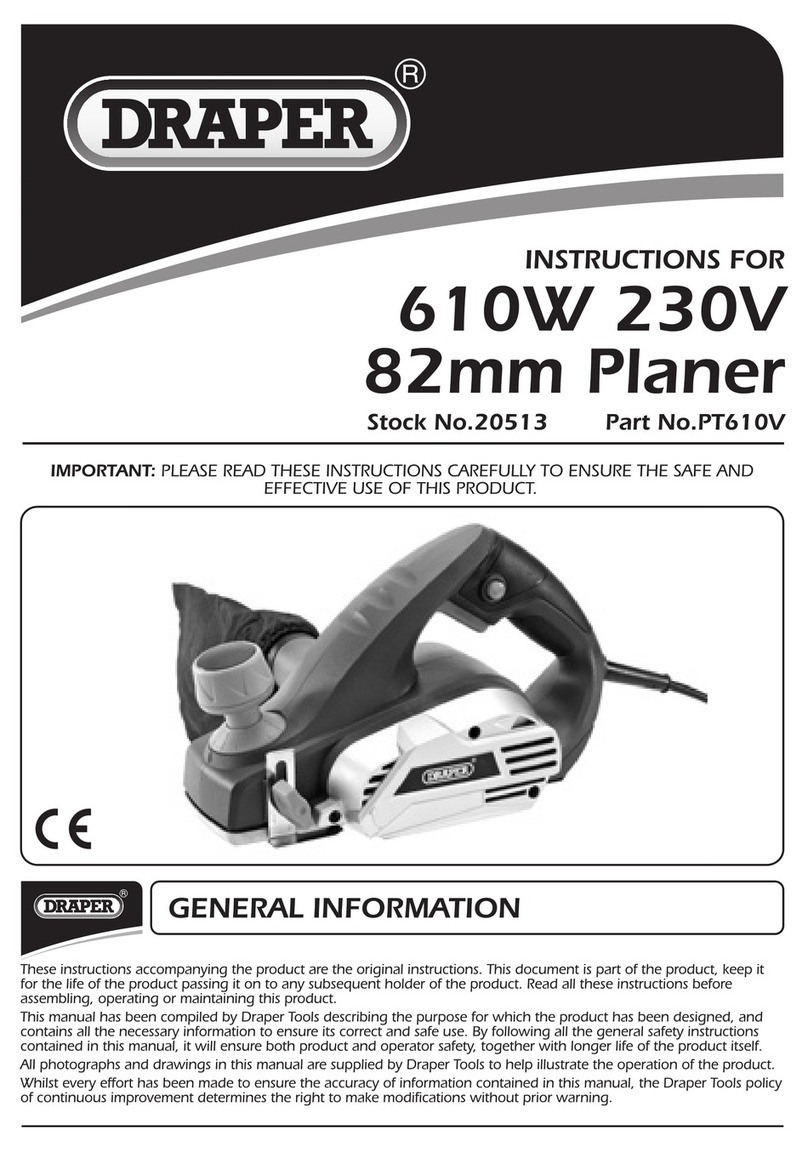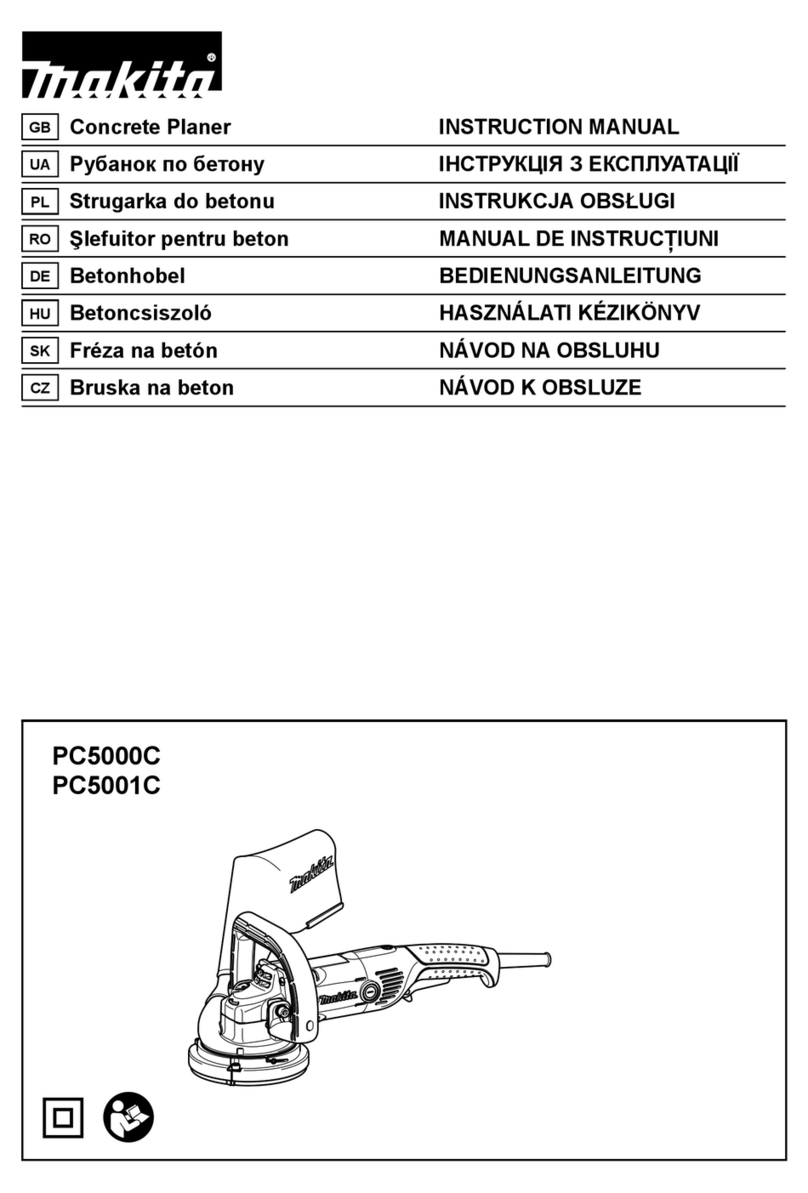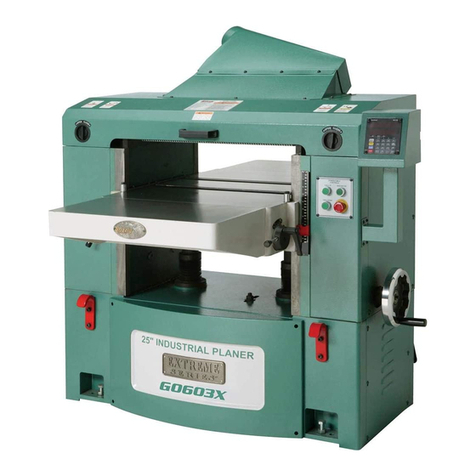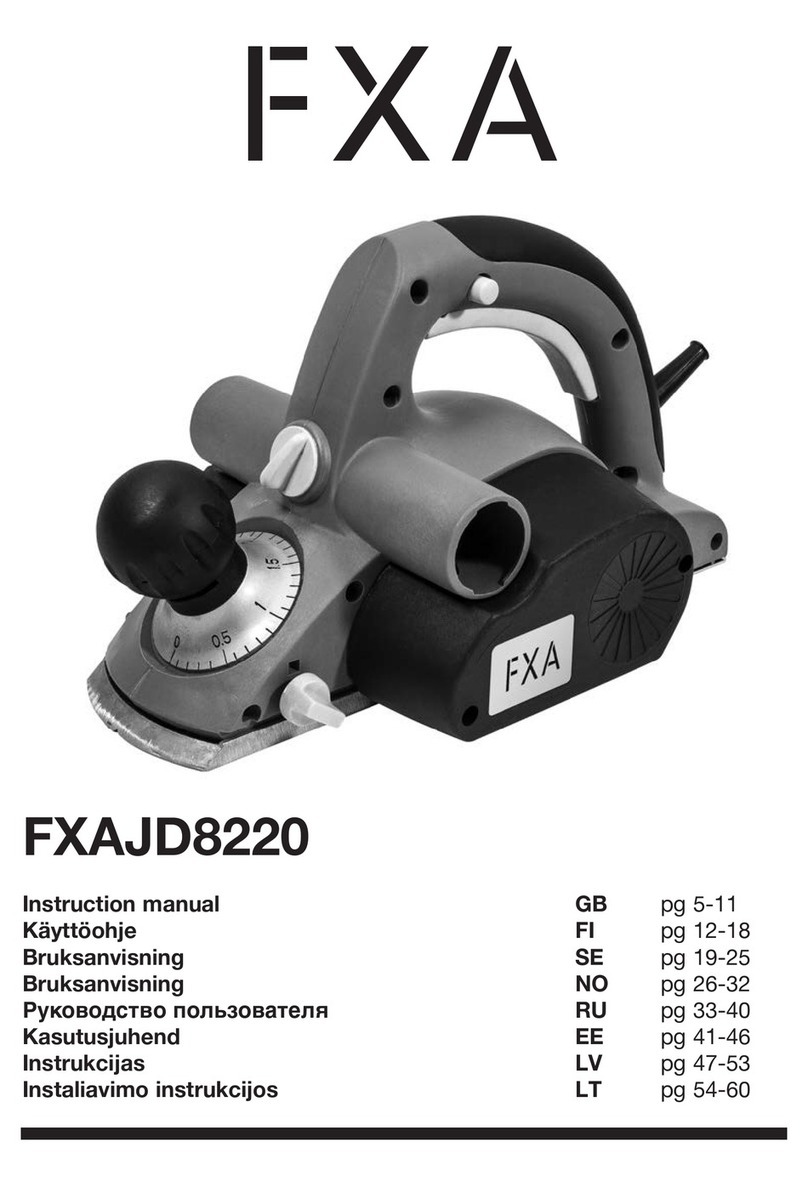7
Palmgren Operating Manual & Parts List 84112
OPERATION (CONTINUED)
The planer is supplied with planing blades mounted in the cutter-
head and the infeed and outfeed rollers adjusted to the correct
height. Planer feed is automatic.The feed rate is 20 feet per minute.
Feed rate refers to rate at which lumber travels through planer. Feed
rate may vary slightly depending on type of wood.
•Position rollercase to produce the depth of cut desired.
•Operator is responsible for aligning work so it will feed properly.
•Lift edge to infeed side of the table by grasping edges of board
at approximately middle of length.
•Boards longer than 24″should have additional support from
free standing material stands.
•Position the workpiece with the face to be planed on top.
•Turn the planer on.
•Rest board end on infeed table and direct board into planer.
•Gently slide the workpiece into the infeed side of the planer
until the infeed roller begins to advance the workpiece.
•Let go of the workpiece and allow automatic feed to advance
the workpiece.
•Do not push or pull on workpiece.
•Move to the rear and receive planed lumber by grasping it in
same manner as it was fed.
CAUTION: Do not stand directly in line with front or rear of planer.
•Do not grasp any portion of board which has not gone past
out-feed roller.
•Repeat this operation on all boards which need to be same thickness.
Planer has return rollers on top so assistant can pass work back to
operator (see Figure 13).
NOTE: Assistant must follow same precautions as operator.
•Surface that the planer produces is smoother if shallower
depth of cut is used.
DEPTH OF CUT
Thickness planing refers to the sizing of lumber to a desired thick-
ness while creating a level surface parallel to the opposite side of
the board.Board thickness which the planer will produce is indicat-
ed by the thickness scale.
Depth-of-cut is adjusted by raising or lowering the rollercase using
handle.
•Quality of thickness planing depends on the operator’s judge-
ment about the depth of cut.
•Depth of cut depends on the width, hardness, dampness, grain
direction and grain structure of the wood.
•Maximum thickness of wood which can be removed in one
pass is 3/32″for planing operations on workpiece up to 51/4″
wide.Workpiece must be positioned away from the center line
of the table to cut 3/32″due to limit tab in the center of the
rollercase.
•Maximum thickness of wood which can be removed in one
pass is 1/32″for planing operations on workpiece from 51/4″up to
121/2″wide.
•For optimum planing performance, the depth of cut should be
less than 1/32″.
•Board should be planed with shallow cuts until the work has a
level side. Once a level surface has been created, flip the lumber
and create parallel sides.
•Plane alternate sides until the desired thickness is obtained.
When half of total depth of cut is taken from each side, the
board will have a uniform moisture content and additional
drying will not cause it to warp.
•Depth of cut should be shallower when work is wider.
•When planing hardwood, take light cuts or plane the wood in
thin widths.
•Make a test cut with a test piece and verify the thickness produced.
•Check accuracy of test cut prior to working on finished product.
AVOID DAMAGE TO BLADES
•Thickness planer is a precision woodworking machine and
should be used on quality lumber only.
•Do not plane dirty boards; dirt and small stones are abrasive
and wear out blade.
•Remove nails and staples.Use planer to cut wood only.
•Avoid knots. Heavily cross-grained wood makes knots hard.
Knots can come loose and jam blade.
CAUTION: Any article that encounters planer blades may be
forcibly ejected from planer creating risk of injury.
AVOIDING SNIPE
•Snipe refers to a depression at either end of board caused by
an uneven force on cutterhead when work is entering or leav-
ing planer.
•Snipe occurs when boards are not supported properly or when
only one feed roller is in contact with work at beginning or end
of cut.
•To avoid snipe on the lead edge of the workpiece, lift work-
piece up slightly above horizontal when feeding into planer.
•To avoid snipe on the trailing edge of the workpiece, use a
material support stand on the outfeed side of planer.
•When planing more than one board of the same thickness, butt
boards together to avoid snipe.
•Snipe is more apparent when deeper cuts are taken.
•Feed work in direction of grain.Work fed against grain will have
chipped, splintered edges.
MMAAIINNTTEENNAANNCCEE
WARNING: Be sure planer is unplugged from any power source
and turned off before attempting any maintenance.
CLEAN PLANER
•Keep planer clean of any wood chips, dust, dirt or debris.
•Clean the four steel columns to prevent the rollercase from
binding when raised and lowered.
•After each ten hours of operation, clean the chain/gear drive
mechanism.
Figure 13 – Workpiece on the Return Rollers




























